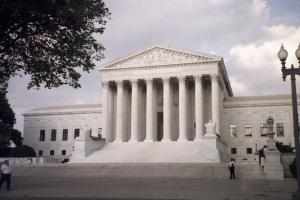In a 5-4 decision, the U.S. Supreme Court ruled in Seila v. CFPB that limiting the power of the president to remove the director of the Consumer Financial Protection Bureau (CFPB) violates the separation of powers of the U.S. Constitution. Congress created the CFPB as an independent agency with a director insulated from direct presidential control in the 2010 Dodd-Frank Act.
The court recognized historical exceptions to the president’s removal power in Humphrey’s Executor (1935) and Morrison v. Olson (1988), but refused to apply those precedents to the CFPB because it held that the agency exercised significant executive power unlike the actors involved in those cases. The court also held that even though the removal power restrictions were unconstitutional, they could be severed from the Dodd-Frank Act, which left the rest of the agency intact.
Chief Justice John Roberts delivered the opinion of the court saying, “While we have previously upheld limits on the President’s removal authority in certain contexts, we decline to do so when it comes to principal officers who, acting alone, wield significant executive power.” Justices Clarence Thomas, Samuel Alito, Neil Gorsuch, and Brett Kavanaugh joined the first three parts of Roberts’s opinion. Part IV of his opinion, which did not receive support from the full majority, argued in favor of eliminating the removal power restriction and leaving the rest of the law intact.
In an opinion concurring in part and dissenting in part, Justice Clarence Thomas, joined by Neil Gorsuch, supported the decision to limit Humphrey’s Executor’s defense of congressional limitations of the president’s removal power, but Thomas said he would overrule that precedent entirely in a future case. He disagreed with Roberts’s decision to sever the removal restrictions from the rest of the law establishing the CFPB.
Justice Elena Kagan, joined by Justices Ruth Bader Ginsburg, Stephen Breyer, and Sonia Sotomayor, wrote a separate opinion concurring in part and dissenting in part. She argued that the majority’s decision “commits the Nation to a static version of governance, incapable of responding to new conditions and challenges.” She agreed with the judgment that the removal power provision was severable from the rest of the law, but disagreed that the removal power restrictions were unconstitutional.
Now, the U.S. Court of Appeals for the 9th Circuit will conduct further proceedings in light of the Supreme Court’s opinion.
Click here to learn more about Seila, or click here to learn about the executive removal power.
Want to go further? Learn more about the five pillars of the administrative state here.
Additional reading:


